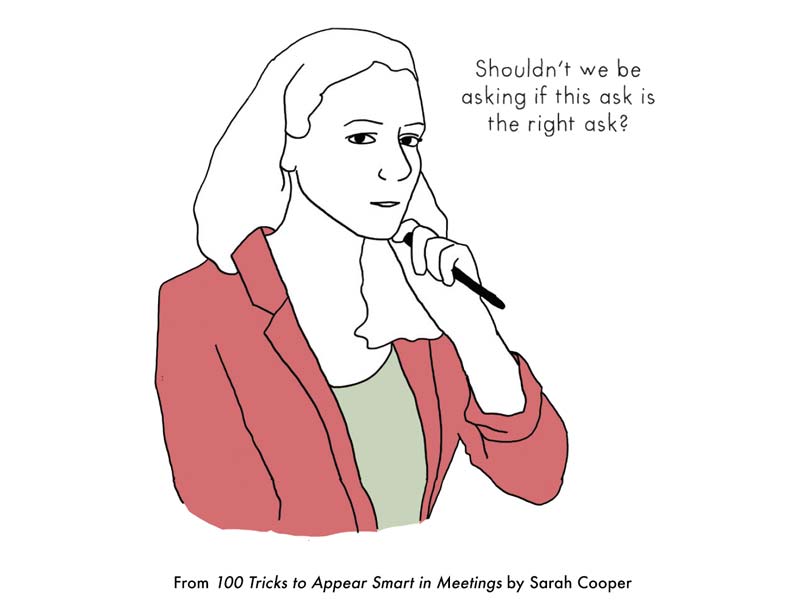
Leslie K. JohnRobust social psychology research indicates that people lie—and lie often. One prominent study found that people tell, on average, one or two lies every day. Negotiators are no exception. Judging from studies done in 1999 and 2005, roughly half of those making deals will lie when they have a motive and the opportunity to do so. Typically they see it as a way to gain the upper hand (although it can actually cause backlash and prevent the kind of creative problem solving that leads to win-win deals). Deception is thus one of the intangibles that negotiators have to prepare for and take steps to prevent.
Many people assume that the solution is to get better at detecting deception. There's a widespread notion that one can reliably spot a liar through subtle behavioral cues—or "tells," in the parlance of poker and other games that involve bluffing. But the evidence doesn't support that belief. One meta-analysis (a study of studies) found that people can correctly identify whether someone is telling a lie only 54% of the time—not much better odds than a coin flip. Even the polygraph—a technology specifically engineered to detect lies in a controlled setting—is riddled with problems and comes to the wrong conclusion about a third of the time. Humans are particularly inept at recognizing lies that are cloaked in flattery: your boss's promise that a promotion is coming any day now; the supplier's assurance that your order is his top priority. We're wired to readily accept information that conforms to our preexisting assumptions or hopes.
Is there anything you can do to ensure you're not duped in a negotiation? Yes, if you focus on prevention rather than detection. There are several science-backed strategies that can help you conduct conversations in a way that makes it more difficult for your counterpart to lie. Though these methods aren't fail-safe, they will leave you better positioned in your deal making and help you to create maximum value.
1. Encourage Reciprocity
Humans have a strong inclination to reciprocate disclosure: When someone shares sensitive information with us, our instinct is to match their transparency. In fact, simply telling people that others—even strangers—have divulged secrets encourages reciprocation. In a series of studies that I conducted with Alessandro Acquisti and George Loewenstein, we presented readers of the New York Times with a list of unethical behaviors, such as making a false insurance claim and cheating on one's tax return. People who were told that "most other participants" had admitted doing those things were 27% more likely to reveal that they had done likewise than were people who were told that only a few others had made such admissions.
Humans are particularly inept at recognizing lies that are cloaked in flattery.
Reciprocity is particularly pronounced in face-to-face interactions. In experiments led separately by Arthur Aron and Constantine Sedikides, randomly paired participants who worked their way through a series of questions designed to elicit mutual self-disclosure were more likely to become friends than were pairs instructed to simply make small talk. (One couple assigned to the disclosure exercise eventually married!) Inducing a close relationship is not the primary goal of most negotiations, of course. But other research, by Maurice Schweitzer and Rachel Croson, shows that people lie less to those they know and trust than they do to strangers.
A good way to jump-start reciprocity is to be the first to disclose on an issue of strategic importance (because your counterpart is likely to share information in the same category). For example, imagine you are selling a piece of land. The price it will command depends on how it's developed. So you might tell a potential buyer that you want to sell the land for the best use. This could prompt her to divulge her plans; at a minimum, you are encouraging a conversation about interests, which is critical to creating mutually beneficial deals. This strategy has the added benefit of letting you frame the negotiation, which can enhance your chances of finding breakthroughs.
2. Ask the Right Questions
Most people like to think of themselves as honest. Yet many negotiators guard sensitive information that could undermine their competitive position. In other words, they lie by omission, failing to volunteer pertinent facts. For example, consider an individual who is selling his business but knows that vital equipment needs replacing—a problem imperceptible to outsiders. It might seem unethical for him to withhold that information, but he may feel that by simply avoiding the topic, he can charge a higher price while still maintaining his integrity. "If the buyer had asked me, I would have told the truth!" he might insist.
The risk of not getting the whole story is why it's so important to test your negotiating partners with direct questions. Schweitzer and Croson found that 61% of negotiators came clean when asked about information that weakened their bargaining power, compared to 0% of those not asked. Unfortunately, this tactic can backfire. In the same experiment, 39% of negotiators who were questioned about the information ultimately lied. But you can go a long way toward avoiding that outcome by posing your queries carefully. Research by Julia Minson, Nicole Ruedy, and Schweitzer indicates that people are less likely to lie if questioners make pessimistic assumptions ("This business will need some new equipment soon, right?") rather than optimistic ones ("The equipment is in good order, right?"). It seems to be easier for people to lie by affirming an untrue statement than by negating a true statement.
3. Watch for Dodging
Savvy counterparts often get around direct questions by answering not what they were asked but what they wish they'd been asked. And, unfortunately, we are not naturally gifted at detecting this sort of evasiveness. As Todd Rogers and Michael Norton have found, listeners usually don't notice dodges, often because they've forgotten what they originally asked. In fact, the researchers discovered that people are more impressed by eloquent sidestepping than by answers that are relevant but inarticulate.
Dodge detection is improved, however, when listeners are prompted to remember the question—for example, when it is visible as the speaker replies. In a negotiation, therefore, it's a good idea to come to the table with a list of questions, leaving space to jot down your counterpart's answers. Take time after each response to consider whether it actually provided the information you sought. Only when the answer to that question is "yes" should you move on to the next issue.
4. Don't Dwell on Confidentiality
Research shows that when we work to assure others that we'll maintain their privacy and confidentiality, we may actually raise their suspicions, causing them to clam up and share less. As early as the 1970s, the National Research Council documented this paradox with potential survey participants: The greater the promises of protection, the less willing people were to respond. This relationship holds up in experimental research. In studies conducted by Eleanor Singer, Hans-Jürgen Hippler, and Norbert Schwarz, for example, fewer than half of the people who received a strong confidentiality assurance agreed to complete an innocuous survey, whereas about 75% of those given no such assurance agreed to do so.
My colleagues and I have discovered that strong privacy protections can also increase lying. In addition, we've found that when questions are posed in a casual tone rather than a formal one, people are more likely to divulge sensitive information. Imagine you are negotiating a job offer with a prospective employee and would like to assess the strength of her other options: Does she have competitive offers? She's likely to be more forthcoming if you avoid or at least minimize confidentiality assurances and instead nonchalantly broach the topic: "We all know there are tons of great firms out there. Any chance you might be considering other places?" Of course, you should still properly protect any confidential information you receive, but there's no reason to announce that unless asked.
5. Cultivate Leaks
People inadvertently leak information in all kinds of ways, including in their own questions. For example, suppose you are in charge of procurement for a firm and you're about to sign a contract with a supplier who has promised to deliver goods within six months. Before signing, he asks you what happens in the event of late delivery. The question could be innocent, but it might also signal his worries about meeting the schedule. So you need to pay attention.
When people leak mindlessly, the information tends to be accurate. Astute negotiators realize that valuable knowledge can be gleaned simply by listening to everything their counterparts say, even seemingly extraneous or throwaway comments—in the same way that interrogators look for statements from criminal suspects that include facts not known to the public.













